All of the communities where World Renew works in Haiti were affected when Tropical Storm Isaac made landfall in the very early hours of August 24, 2012. The storm brought with it heavy rains and wind. In Haiti’s many mountainous regions, landslides were common. In the low-lying regions, flooding occurred. Throughout the country, homes were destroyed, crops were washed away, and families who had been rebuilding their lives after the devastating 2010 earthquake were set back once again. Yet, in the midst of this devastation, there were also some rays of hope.
All of the communities where World Renew works in Haiti were affected when Tropical Storm Isaac made landfall in the very early hours of August 24, 2012. The storm brought with it heavy rains and wind. In Haiti’s many mountainous regions, landslides were common. In the low-lying regions, flooding occurred. Throughout the country, homes were destroyed, crops were washed away, and families who had been rebuilding their lives after the devastating 2010 earthquake were set back once again. Yet, in the midst of this devastation, there were also some rays of hope.
“I am very happy to report that all of the houses that CRWRC – now known as World Renew – built in response to the Haiti earthquake withstood the winds very well and no damage whatsoever was reported, except in cases where trees fell on a house,” said World Renew Senior Project Manager, Ken Little, of 3,425 earthquake and hurricane resistant homes that World Renew built for earthquake survivors.
“The winds were very strong in the plains and many trees and banana plantations were damaged, however our finished houses were not affected. This is proof that the design has responded well to the high winds, thanks to the hurricane straps/clips on the roof trusses, the quality of the construction, and the solid anchorage to foundations. Our main concern for future hurricanes was whether the roofs could withstand the strong winds and not get blown off. Again, we have no reports of roofs damaged by Isaac winds on any of the finished houses. Praise God!”
Similarly, in April 2012, two massive earthquakes measuring 8.6 and 8.3 struck a region of Indonesia that had been severely affected eight years earlier by the 2004 South Asia tsunami. This time, the communities of Blang Mee where World Renew had worked for five years, knew how to respond. They had received Disaster Risk Reduction (DRR) training and safely evacuated along designated roads to higher ground. In addition, when they returned to their homes, their earthquake-resistant houses were undamaged.
From building earthquake and flood-resistant homes to training people on evacuation plans to teaching conservation farming methods, when World Renew responds to disasters around the world it also incorporates Disaster Risk Reduction (DRR) programming to help communities better prepare for and avoid the risks of future disasters.
What does Disaster Risk Reduction mean?
“DRR involves ongoing work to reduce the extent of damage that can be caused by natural hazards such as earthquakes, floods, severe storms, and droughts,” said Wayne deJong, World Renew Director of Disaster Response. “This prevents these hazards from becoming a disaster in the first place. DRR can involve changes in practices that make communities susceptible to disasters, but it also involves awareness of how to avoid the destruction caused by natural hazards.”
This type of approach is essential to World Renew’s ministry. Many of the communities where World Renew has worked over the past 50 years are considered “disaster prone.” Some face almost annual risks of droughts or floods. Other communities are built along earthquake fault lines or in hurricane/typhoon storm paths.
While most disasters are unexpected and unpreventable, World Renew has learned that preparedness, education and strategic project planning can play a major role in reducing the impact of disasters in high-risk communities. While disasters will continue to happen, communities are learning to safe-guard against them and thus reduce the number of lives lost and the extent of resources destroyed.
For example, in an ongoing effort to reduce the impact of droughts and other disasters in Kenya, World Renew began incorporating DRR thinking and even hired a full-time Disaster Risk Reduction specialist, named Geoffrey Mahinda, in 2011 to work with Kenyan communities. Mahinda identified areas to improve preparedness and worked with community members to build local resilience.
In 2011, Mahinda helped introduce drought-resistant crops and new farming techniques to communities affected by drought. Today, those families are harvesting crops that will prevent them from going hungry during the dry season, and their land is less susceptible to erosion. Other strategies that World Renew encourages include the establishment of a grain bank to store food during times of plenty and sell when food prices are higher, a greenhouse project to grow food in a new way, and flood- preparedness planning.
After Cyclone Nargis hit Myanmar in 2008, World Renew constructed 322 cyclone resistant homes with appropriate cross bracing and elevation from the ground. Elevated grain banks were also constructed to help families remain food secure by keeping the rice dry in times of monsoon and flooding.
In Indonesia following the 2004 tsunami, World Renew trained Disaster Risk Reduction “Cadres” who learned how to map-out potential hazards and develop capacities for reducing risk, including early warning systems. They went out to villages and disseminated the knowledge they learned, teaching communities how to identify risks, develop good practices and plan evacuation routes. When a tsunami warning sounded in 2012, they were able to escape to higher ground.
And in 2009 when an earthquake struck Padang Indonesia, World Renew refused to rebuild homes in landslide-prone areas. Instead, it encouraged families to relocate and then built 870 very strong, brick, two-room shelters using earthquake-resistant construction techniques. They can now live without fear of future earthquakes.
“World Renew works with communities to develop skills and knowledge that will allow them to take ownership of projects,” explained Grace Wiebe, World Renew Senior Project Manager for the tsunami response and the Pandang earthquake. “In 2011 at the closing ceremony for our work in Tandikat, the Governor of West Sumatra Province in Indonesia told us: ‘What you have done is so noble. Tandikat is very fortunate to have received these earthquake resistant assets, and for so many people to have learned the construction techniques.’ He then told his community, ‘Please continue to build houses with this new knowledge even after CRWRC [World Renew] leaves.”
Disaster Risk Reduction also promotes long-term community development. By equipping people with resilience and coping strategies, DRR programming ensures that communities do not face such significant setbacks in their livelihoods due to future natural disasters. It also helps them to “get back on their feet” more quickly when disasters strike. As a result, other community programs in areas such as literacy, nutrition, health, and small business development can carry on without experiencing the significant setbacks that disasters usually cause. The goal is to “build back better.”
Looking back on the past 50 years, World Renew staff and partners continue to be amazed by the faith and hope found in people affected by some of this century’s most difficult disasters. Through Disaster Risk Reduction programming, we hope to continue to renew the faith and strength of these communities as they prepare to face new challenges.



